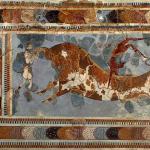Uzbek traditional cuisine or national cuisine of Uzbekistan is a combination of culinary characteristics of many eastern peoples, mainly Persians and Turks. However, at the same time, the closest neighbors (Turkmenistan and Kazakhstan) had virtually no influence on the formation of traditional foods in this country. Modern Uzbek cuisine, which is familiar to us, was formed quite recently, no more than a century and a half ago, that is, the history of its existence is still very small.
The Russians have had the greatest influence on Uzbek cuisine in recent times. It was they who enriched the cuisine of Uzbekistan with a variety of vegetables (radishes, potatoes, tomatoes, cabbage). In addition, they introduced new dishes to the established Uzbek menu. The national cuisine of Uzbekistan was also enriched by Europeans, from whom only culinary techniques in cooking were borrowed to a greater extent.
An important feature of national Uzbek cuisine is the great popularity of all kinds of baked goods. Traditionally, the meal begins only after the elder at the table breaks the flatbread in half. Also, this honor can be entrusted to the youngest “participant of the feast,” but only in some cases. In general, in Uzbekistan one can observe a rather careful attitude towards bread.
Another important feature of Uzbek cuisine is that many Uzbeks profess Islam. This predetermined some dietary restrictions. For example, pig meat is prohibited, as is alcohol. The most popular meat, which is used for preparing first and second courses, as well as savory baked goods, is lamb. Horse meat and poultry meat, as well as eggs, are practically not used. Fish is also practically not used in cooking recipes. The same goes for mushrooms.
 A characteristic feature of Uzbek meat preparation is the addition of a large amount of onions. You won't see an abundance of spices. The most common seasonings in the cooking of Uzbekistan are barberry, basil, cumin or cumin, cumin, dill, sesame and coriander.
A characteristic feature of Uzbek meat preparation is the addition of a large amount of onions. You won't see an abundance of spices. The most common seasonings in the cooking of Uzbekistan are barberry, basil, cumin or cumin, cumin, dill, sesame and coriander.
To fry food, Uzbeks use cottonseed oil or lamb fat, which is invariably heavily heated. In addition, it should also be noted that many Uzbek dishes are steamed, using a special pan called Kaskan. It consists of two tiers. Water is poured into the lower one for steam generation, and the products themselves are laid out in the top tier.
In addition, speaking about the national cuisine of Uzbekistan, one cannot fail to note the fact that different regions of the country are characterized by different dishes. For example, residents of the north prefer all kinds of flour products and fatty pilaf with lamb, while southerners prefer multi-component complex dishes consisting of rice and vegetables.
The most famous Uzbek dish is pilaf, which is usually prepared by men. It consists of rice, lamb, carrots, and lamb fat. They can also add another component to pilaf, such as mung beans, which are also called Mung beans. If you are lucky enough to find yourself in Uzbekistan, we strongly recommend that you go to a restaurant or cafe serving local cuisine and try traditional Uzbek pilaf!
Noodles are also traditionally prepared in Uzbekistan. It is added to both second and first courses. So, examples of the most famous noodle-based soups include Lagman (long noodles boiled in meat broth with vegetables) and Naryn (boiled noodles in water or broth with pieces of boiled meat, seasoned with broth). In general, soups are quite common dishes in Uzbek cuisine. Most often they are prepared on the basis of rice and mung bean, as well as on the basis of other varieties of cereals.
 Second courses in Uzbek cuisine are mainly represented by all kinds of combinations of meat and vegetables. The latter, by the way, as a rule, are not an independent dish, but are included as an integral component in other dishes, for example, in side dishes and soups.
Second courses in Uzbek cuisine are mainly represented by all kinds of combinations of meat and vegetables. The latter, by the way, as a rule, are not an independent dish, but are included as an integral component in other dishes, for example, in side dishes and soups.
As for drinks in this eastern country, the most popular is tea. Its green variety is most often consumed during scorching heat, as it has a remarkable cooling ability. However, no sweets are served with green tea.
In general, Uzbek cuisine is very interesting! It's definitely worth trying. At the same time, we would like to note that the cooking recipes are somewhat intricate. You can't call them simple. However, this should not stop you from wanting to cook any Uzbek dish, because the recipes given on our website are equipped with the most detailed descriptions, as well as step-by-step photos. Therefore, understanding the nuances of cooking will be quite feasible even for a novice cook!
Colorful and original, hearty and aromatic Uzbek dishes are famous throughout the world. The cuisine of Uzbekistan is imbued with the trends and culinary traditions of the Turkic and Persian peoples. A little bit of everything is taken from them and the most important thing at the same time. Dishes from Uzbekistan, bright in color and rich in taste, are prepared from simple and affordable ingredients. And you can make them in your kitchen if you just study the recipes a little.
Features of Uzbek cuisine
The main ingredient for most Uzbek dishes is meat. The most commonly used meat is lamb and horse meat (for some dishes). Poultry and beef are not so loved and revered by Uzbeks. We won’t talk about pork and Muslim traditions at all.
In addition to meat, fish goes very well. It is especially popular in coastal areas, where a lot of fish kebabs are prepared during the seasons. Uzbek dishes have a certain seasonality. In the cold winter season - these are meat rolls, salads and hot soups, homemade sausage. In summer, Uzbeks most often prepare hearty lagman for dinner and aromatic teas. Autumn is a time when the abundance of harvest is always skillfully used by Uzbek housewives. These are dolma, pumpkin pilaf, manti with potatoes, sour milk soup.
The decoration of the table and the calling card, of course, is pilaf. It will differ depending on the area. Uzbek dishes are so diverse and multifaceted that there are more than a hundred types of recipes for pilaf alone.
Lamb lagman
- Three medium onions.
- One green radish
- Four ripe tomatoes.
- One head of garlic.
- Sweet bell pepper.
- One small carrot.
- Vegetable oil - 200 grams.
- Chili pepper (optional).
- Half a kilo of lamb.
- A small bunch of green onions.
- Green beans - 100 grams.
- Spices: salt, ground allspice or ground pepper, coriander, paprika.
Lamb lagman has its own twist - it's homemade noodles. To prepare it you will need: four glasses of flour, three chicken eggs, a pinch of soda and salt, as well as a little vegetable oil. Mix these ingredients into a thick dough, cover it with a towel and leave to “rise” for two hours.

In a small container you need to dilute salt and water. Dip your hands into salt water and knead the dough. Gradually it will become saturated with the salty solution and become soft and pliable. Rub the finished dough with vegetable oil and leave for another half hour in the bowl. Small lumps (the size of a walnut) are made from the infused dough. A long flagellum is made from each and coated with oil. Noodles will already be stretched out of them.
Experts advise not to rush and let the test sit for the required time. The lack of skill will be more than compensated for by high-quality proofing of the dough. The noodles can be made for future use; they keep well in the refrigerator for two to three days.
Let's move on to vegetables
Cut onions, radishes, carrots and turnips into pieces. Remove the skin from the tomato and cut into slices. The sweet is chopped into strips before. Beans and garlic - in long strips. Only the hot chili pepper is not cut in any way; it is left whole and added to the dish.
Cut the meat into pieces or long bars and place in a cauldron where the vegetable oil has already been heated. Fry. Then add vegetables one by one: onions, carrots, radishes, turnips, green beans, tomatoes, garlic and bell peppers. Pour in some boiled water. It's boiling. Simmer for ten minutes. Add seasonings and salt. Turn off the gas.
Boil the noodles in lightly salted water. Drain in a colander. Lamb lagman is served in this calculation: noodles - 2/3 of the plate, 1/3 - meat and vegetables.
Uzbek dolma
- 300 grams of lamb.
- Grape leaves.
- Five large onions.
- One glass of rice.
- One glass of sour cream or low-fat kefir.
- Greens: cilantro, parsley, dill, basil.
- Spices.
Cut the lamb into pieces. Peel the onion. Pass the meat and onions through a meat grinder. Add undercooked rice, herbs, salt and pepper to the minced meat. Uzbek dolma is somewhat similar to the cabbage rolls we are used to. Only instead of cabbage, grape leaves are used here. They should be doused with boiling water, laid out on the table and filled with rice and meat filling.
The finished rolls are laid out in a large spacious container. Add broth or just water. Extinguishing must take place over low heat. Depending on the number of grape cabbage rolls, the cooking time will vary. Served with sour cream or kefir.
Shashlik
The secret to cooking any kebab lies in the marinade. Uzbek lamb shish kebab is no exception. For the “Uzbek style” marinade you will need:
- 1.5-2 kilograms of lamb (or beef).
- Four onions.
- Spices and salt.
The meat must be prepared, that is, rid of films and sinews. The onion is chopped very finely or grated (we prepare handkerchiefs to wipe away tears). Ideally, the dish requires only onion juice.

But if the tears “choke” it and prevent you from squeezing it out, it doesn’t matter, you can also use it with pulp. Add your favorite spices, salt and fresh herbs (optional) to the meat. The marinade is ready. Its secret is in the simplicity of the ingredients and onion juice.
Katykli soup
Soups with sour milk are very popular in Uzbekistan. One of these dishes is katykli soup. The highlight of the dish is the use of dzhugara - a special cereal.
Required:
- Dzhugara - 500 grams.
- The same amount of meat (lamb or beef).
- Two heads of onions.
- Half a liter of sour milk.
- Two large bunches of cilantro, dill, parsley and a sprig of raikhan.
- Red hot pepper and salt.
Dzhugaru should be cooked for about an hour in slightly salty water. After the cereal is ready, add finely chopped meat to it. You can put carrots or turnips, fried onions. Cook for another twenty minutes.

Remove the soup from the heat and stir thoroughly. As soon as it cools down a little, you can pour in the sour milk. Top with finely chopped greens.
Fried dumplings
- Flour - 500 grams.
- 500 grams of meat.
- Two chicken eggs.
- Five to seven onions.
- Half a glass of water.
- Hot pepper and salt.

Uzbek dumplings, like any other, consist of two main ingredients: dough and minced meat. But there are also some peculiarities. The dough is made with egg. It is broken into a large bowl, salt and water are added. Beat thoroughly. Add flour little by little and knead the dough thoroughly. Leave it for ten to twenty minutes.
The minced meat is standard: we pass the meat and onions through a meat grinder with the addition of salt, pepper and a small amount of herbs. Small meatballs from fried minced meat are placed on squares of dough, rolled up and deep-fried.
Fresh tomato salad - Achik-chuchuk
Fresh Achik-chuchuk, a salad made from selected fleshy tomatoes, is quite popular in Uzbekistan. It is very easy to prepare. Good for pilaf and lamb shish kebab.
- Four to five large tomatoes.
- Two small red onions.
- Vegetable oil, salt, spices, herbs, pepper - to taste.

The secret of this salad lies in the special preparation of onions. Tomatoes, as for any other salad, are cut arbitrarily (cubes, half slices, rings, etc.). But the onion is cut into half rings and ground with salt. This is done by hand. Then the ingredients are mixed and seasoned with vegetable oil.
Katlama
Another popular and world-famous Uzbek dish is katlama - flatbread made from unleavened dough.
- Half a kilogram of flour.
- 200 milliliters of water.
- One teaspoon of salt.
- Vegetable oil - two tablespoons.
- Parsley, onions and salt - for filling.
Pour boiled water into a large deep container. Add flour, sunflower oil and salt there. The kneaded dough must be dense (steep). Leave it for twenty minutes to let it dry a little. Then divide into two parts, roll each one out very thin. After coating with vegetable oil and rolling the piece of dough into a roll, leave it alone for another twenty minutes.
Now roll it out again and add the filling. Roll the roll again. Cut into pieces and press each one lightly with your palm. It is recommended to fry the flatbreads in a frying pan in a sufficient amount of oil.

There is also a popular version of the Tatar katlama. It is more suitable for those who watch their diet and avoid eating fried foods. The Tatar version is prepared in exactly the same way as the Uzbek one. The only difference is that the flatbreads are not fried, but steamed.
Ayran
The cuisine of Uzbekistan is famous not only for its aromatic flatbreads, hearty shish kebab and pilaf, but also for its wonderful drink that gives health and longevity. This is an Uzbek ayran, which has long been credited with miraculous properties.
- Beneficial effect on the digestive system.
- Improving metabolic processes in the body.
- Positive effect on the heart muscle.
- It gives the skin freshness, radiance and youth.
- Saves from severe hangover.
- And it simply quenches thirst and even hunger well.
Ayran, like other Uzbek dishes, is prepared from simple and inexpensive ingredients. The main component is katyk. But you can always replace it with goat's milk or low-fat natural yogurt. You will also need salt, sugar and water.
The cooking process is so simple that it may seem incredible to many. Take one part milk or yogurt, add two parts cold water and beat until foam forms. Now all that remains is to sweeten the drink a little, add salt and add finely chopped herbs.

Ayran can be used for more than just a drink. It is often used to make okroshka and hearty flatbreads. The okroshka recipe is simple. You will need several boiled potatoes (diced), boiled chicken eggs (six pieces), four fresh cucumbers (straws), a couple of large radishes (diced), boiled sausage or ham (boiled meat can be used). All ingredients are sent to a large bowl, where ayran is added. By stirring and adding some fresh herbs, you get a surprisingly satisfying, nutritious, yet low-calorie, refreshing dish suitable for the summer heat.
The recipe for potato cakes with ayran is as simple as preparing okroshka. Boiled potatoes need to be mashed, add finely grated cheese, a little salt, fifty grams of butter. Mix ayran and three hundred grams of sifted flour into a thick dough. We make flatbreads out of it. You can stretch them with your hands or simply roll them out with a rolling pin.
All that remains is to add the potato and cheese filling and pinch the edges of the tortillas. They can be cooked until cooked in a dry frying pan or in the oven. Served with butter.
The features of Uzbek cuisine, like many other national cuisines, are determined by the specifics of local agriculture. Grain farming is very well developed in Uzbekistan, so noodles and bread are of utmost importance in local cuisine. Sheep farming is also widespread in Uzbekistan, so the most popular type of meat is lamb, which is included in most main dishes of Uzbek cuisine. Horse meat and camel meat are used less frequently.In general, Uzbek traditional cuisine consists of fatty, aromatic and moderately spicy dishes. However, Uzbek cuisine must be divided into two parts, since it is very susceptible to seasonality: in the summer they eat mainly fresh fruits and vegetables and dishes using them, in the winter - dried fruits, pickled vegetables, and fatty meats. Seasonings are very actively used: hot red pepper, black pepper, basil, coriander. It is impossible to imagine local cuisine without vegetables, the most popular of which are carrots, pumpkin, tomatoes, potatoes, and garlic. The most popular vegetables are grapes, watermelon and melon.
If Ukraine is associated with borscht, then Uzbekistan is associated with pilaf. This is undoubtedly the most popular and most famous dish of Uzbek cuisine, which is, roughly speaking, pieces of meat with rice, carrots and onions. There are dozens of varieties of pilaf known in Uzbekistan, which differ both in the method of preparation and in the situational nature - there are different types of festive and ceremonial pilaf. Pilaf is not just a dish, it is a real cultural symbol of the country. According to tradition, if pilaf is prepared for guests, then the owner of the house must certainly cook it. This tradition is still observed in many families today.
However, jokes that Uzbek cuisine consists of hundreds of dishes, 99 of which are varieties of pilaf, are hardly appropriate. Uzbeks do not live by pilaf alone; they have something to be proud of even without this dish. Other well-known dishes of Uzbek national cuisine: shurpa (a soup made from a large piece of fatty meat and fresh vegetables), lagman (a noodle-based dish that can be served as both a soup and a main course), manti (large steamed dumplings) , mastava (vegetable soup with lamb and rice), chuchvara and samsa (stuffed dough pies, served both as an appetizer and as a main course), dimlama (meat stew with vegetables) and a great variety of kebabs and kebab.
While the choice of soups and hot dishes of Uzbek cuisine is quite wide, the range of desserts is indeed very limited. A typical meal ends with fresh fruit or dried fruit compote; less often, nuts or halva are served at the table. Sweet pastries are less common than in other countries in the region.
The traditional Uzbek national drink, like in many other countries of Central Asia, is green tea. For Uzbeks, green tea is a drink that has not only gastronomic but also cultural significance. This drink always accompanies a meal; it is a symbol of hospitality. If the owner of the house offers tea to a guest, it means that he is happy about this guest. Green tea is considered traditional, but black tea is no less popular in Tashkent.
Alcohol is consumed much less in Uzbekistan than in European countries, but wine is popular relative to other Muslim countries. There are more than a dozen wineries in Uzbekistan that produce quite decent wine from local grapes.
Uzbek national cuisine is not only dishes, but also a special ceremony of eating and table setting. Many Uzbek families still use special serving utensils and observe table etiquette, which allows them to preserve the national flavor and turn an ordinary meal into a real ceremony.
A country ideal for gastronomic tourism. It is no coincidence that I started losing weight ahead of time, so that the trip to the world of meat and dough would not cause irreversible changes to my figure.
Main dishes of Uzbek cuisine
Hot dishes
The most famous dish of Uzbek cuisine is pilaf.
Pilaf
Pilaf is not just rice and meat, pilaf is a symbol, this is what first comes to mind when you hear the phrase “Uzbek cuisine”.

Today there are more than a thousand recipes for pilaf with various ingredients. For example, in the capital of Uzbekistan, before preparing pilaf, all ingredients are fried, and in Samarkand, vegetables are laid in layers and steamed. Pilaf also differs in color: in Samarkand it is light, and in the Fergana Valley it is dark.

The story of the appearance of pilaf, which local residents told me about, is interesting. In ancient times, at the end of the 14th century, the great Timur turned to the mullah, concerned that the soldiers were often hungry and did not have enough strength for a full-fledged battle.
The Muslim priest advised: “We need to take a large cast-iron boiler. Place in it the meat of not old, but not very young lambs, selected rice, swelling with pride that it will be eaten by brave warriors, young carrots, blushing with joy, and sharp onions, stinging like the sword of a highly respected emir. All this must be cooked over a fire until the smell of the cooked dish reaches Allah, and the cook collapses in exhaustion because he has tasted the divine food.” Plov showed himself excellently in action and more than once rescued Tamerlane’s army.

This dish is not prepared in portions. If you want to try real pilaf, then ask the locals, and they will definitely send you to some nondescript establishment where the aromatic dish is languishing in a large cauldron. Usually by one o'clock in the afternoon the pilaf is already over. I remember my despair when, leaving Samarkand, my evening plan to get acquainted with pilaf could not come true. Thanks to the kind people who gave the tip, and the next day at 11:00 I was already there, eating a delicious dish with spices and tender meat.

There is another interesting story associated with pilaf, which explains its name. Once upon a time, a prince fell in love with a girl from a poor family, and they, of course, could not be together. The prince suffered so much that he eventually gave up food and food. The prince's father did not want to watch his son wither away, and called the famous healer Abu Ali ibn Sina with a request to find out the cause of the illness. Ibn Sina examined the prince and realized that the cause of the illness was love. There were only two ways to save the unfortunate prince: allow him to get married or feed the prince’s body, exhausted by suffering, nourishing palov-osh- the dish from which the name of modern pilaf comes.
Shashlik
Another dish without which it is impossible to imagine Uzbek cuisine is shashlik. Who among us doesn’t like to indulge in juicy kebab with pieces of fried lard and the indescribable aroma of a fire? However, few people know that there are a great variety of kebab recipes in Uzbekistan.

The most traditional kebab is made from young lamb meat, previously marinated in spices and herbs. The meat is threaded onto a skewer mixed with lard.
If you ask an Uzbek what is the best marinade for meat, we will be surprised. This is not kefir, not vinegar, or even wine. The most correct marinade is water. This is exactly how Uzbek men (and they are the ones responsible for the shish kebab) prepare meat. Chopped onions, spices, dry apricot branches, cherry leaves and grapevine are added to the water.

In good restaurants, in addition to traditional shish kebab, you can find other delicious curiosities:
- kebab from ground meat - qimah kabob,
- liver kebab - jigar kabob,
- kebab of meat wrapped in lard film - charvi kabob.
Soups
In Uzbekistan, they love rich soups and cook them over low heat. And although the soups here are so satisfying that they could easily be a separate dish, here they are more often treated as an addition to the “main” delicacy.
Shurpa
This is the most popular soup in Uzbekistan. It entered world cuisine from the Ottoman Empire and acquired different names in different countries: sorpa in Kazakhstan, Kyrgyz shorpo and even Romanian chorbe. An important component of this appetizing and satisfying dish is the broth, to which, in addition to traditional fatty lamb, chicken or beef is added. Be prepared for the rich soup of meat and vegetables to hit all your taste buds at once.

Lagman
Another delicious soup, typical of Uzbek cuisine. It is incredibly satisfying thanks to its excellent composition. Meat, homemade noodles, vegetables - this is the ideal combination, which, with the right choice of all ingredients, leads to an excellent result.

To make the lagman “correct”, it is best to use lamb meat with a layer of lard. Of course, there are many recipes for lagman, including adapted ones, but real soup is obtained when, in addition to the right ingredients, aromatic gravy made from lamb fat and vegetables is added to it vaja.
I was amazed at the skill of the chefs when I saw how deftly they kneaded the noodle dough and how beautifully such ideal and tasty noodles appeared from a simple set of flour + water.

Other delicious soups of Uzbekistan that are worth trying include:
- mastava made from meat (served with sour milk),
- mashkhurda from beans,
- waved from fried lard,
- moshubirinch from lamb and rice.
Uzbek food is always accompanied by bread, for which the locals have special respect. Hot non flatbreads from the local tandoor oven are served for breakfast, lunch, and dinner. Let's take a closer look at baking.
Dough products
Non cakes
Despite the fact that the flatbreads are many hundreds of years old, they are absolutely not beaten and can easily satisfy even the tastes of gourmets: crispy crust, soft dough and piquancy that is added to the flatbreads by sesame, nigella, cumin or poppy seeds.
Surprisingly, the recipe for flatbreads has undergone virtually no changes over time. Since ancient times, cakes were made round, since without the sun and without bread there is no life on earth.

Another interesting tradition is that bread baking is predominantly done by men. There is no goal here to humiliate the weaker sex; on the contrary, working in a tandoor is very difficult, because every day you need to knead many kilograms of dough by hand, and working at a hot stove is more suitable for men.

There are different types of flatbread, very tasty flatbread patir with the addition of lamb tail. In addition, different parts of Uzbekistan have their own bread traditions:
- in the Fergana Valley, puff pastry with cracklings is considered typical jizzali-non And zogora-non from corn flour;
- and the greatest fame in the world deservedly went to flatbreads gala-osiegi non from Samarkand. They are baked from fermented whey or cream, adding chopped onions and sesame oil to the recipe. The popularity of this flatbread is largely due to the amazing fact that, even knowing the exact recipe, it is impossible to repeat it.

There is a legend in Uzbekistan according to which the emir (ruler) of Bukhara once tasted the most delicious Samarkand flatbread and ordered the best baker from Samarkand to be brought to him to bake him exactly the same flatbread. The baker followed the emir's order, but, alas, he was unable to achieve the exact result; the taste was slightly different from Samarkand. The enraged emir called the baker to account, but he justified himself in the style of Central Asian wisdom by saying that the ingredients lacked Samarkand air.
For me, this feature of the East is very attractive, because it is so fabulous when every little thing is surrounded by legends and legends.
Manti
Uzbek manti is another dish that we can’t help but talk about. I love Georgian khinkali, so when I saw manti, I wanted to try and compare the two dishes. Well, I couldn’t make a comparison: both dishes turned out to be so perfect that I decided not to choose a winner.
Uzbek manti made from delicate dough with a juicy filling is eaten with your hands, carefully sipping the rich broth. The most popular filling is meat, but there are other options that are no less interesting and definitely no less tasty: meat with radish, lamb lard with sugar, pumpkin and potatoes.

Vegetable and fruit dishes
Vegetables and fruits of Uzbekistan are one of the symbols of the country. In the summer-autumn period, you can buy them in Russian markets, but it is much nicer and cheaper to try local juicy natural products at the place of their collection, in sunny Uzbekistan. The most delicious and healthy Uzbek vegetables and fruits are pot-bellied eggplants, colorful peppers, richly flavored tomatoes, sweet pears, colorful grapes, savory figs, plums, sugar melons and scarlet watermelons. In autumn, ripe persimmons, fragrant quinces, juicy pomegranates and sunny lemons appear in the markets.
During the autumn harvest season, bazaar stalls can easily replace museums. Bright colors, aromas of juicy vegetables and fruits, abundance and variety of varieties, naturalness of the product - all this made me a regular at Uzbek markets. Moreover, while you walk around and choose one of 10 varieties of tomatoes, you can have a lot of tasting: the sellers are very good-natured and easily let you try their product.

In Uzbek cuisine there are few vegetable dishes as such; a special role here belongs to pumpkin. It can be found as a separate dish from meat. The most delicious option is fried pieces, which are then stewed in sour cream.
 Uzbeks also love corn on the cob, but do not fry it in ashes, as in neighboring countries, preferring to cook it over coals.
Uzbeks also love corn on the cob, but do not fry it in ashes, as in neighboring countries, preferring to cook it over coals.
If you're in Uzbekistan, don't miss it cook biirona, a dish that serves as a side dish, as a filling for baked goods, and even as an independent dish. Cook biyron is a combination of greens and lamb fat, stewed in oil.

Spices
Spices, like flatbread, are another important attribute of Uzbek cuisine. After all, such a “banal” set as meat, flour and vegetables can sparkle with completely unusual notes when adding different spices.

The most popular additives are coriander, cumin, barberry, cumin, sesame, basil, thyme. Spices not only add flavor, but also create an inviting aroma that makes you throw away all plans for later and urgently try the tempting dish!

At any Uzbek bazaar, the spice seller is one of the first to catch your eye. Bright aromatic mountains of spices will not leave anyone indifferent. Here, unlike supermarkets, you can smell and choose both individual spices and themed sets: for fish, shashlik, pilaf.
I especially want to praise saffron, considered the king of spices. It gives dishes a yellowish tint and an incredible aroma. Even in ancient times, saffron was 10 times more expensive than the most expensive spices.
 As a true king of taste, saffron is a loner and cannot be combined with other spices in dishes. In Uzbekistan, saffron is added to pilaf, baked goods, butter and even tea. But still, saffron is an expensive spice, so not any pilaf or any tea is seasoned with it, but rather only festive dishes or treats for dear guests.
As a true king of taste, saffron is a loner and cannot be combined with other spices in dishes. In Uzbekistan, saffron is added to pilaf, baked goods, butter and even tea. But still, saffron is an expensive spice, so not any pilaf or any tea is seasoned with it, but rather only festive dishes or treats for dear guests.
Sweets
No treat is complete without sweets. They are placed on the table before the main course is served with green tea, the main drink in Uzbekistan, served in painted, atmospheric bowls.
Among the sweets that are held in high esteem:




National drinks
Kumis
This drink is probably the first thing that comes to mind when mentioning fermented milk products from Asian cuisine. You have to try kumiss, because if you say “a drink with the simultaneous taste of wine, kvass and kefir,” then you may not have the desire to try it. Although in practice, not everyone likes kumiss the first time. I must admit, the first time I was also not very inspired by the strange viscous drink, but after 3 days of traveling around the country I realized that in the heat there is no better thirst quencher than kumiss.
 Kumis is traditionally prepared from mare's milk, but there are also modifications from the milk of camel, goat and even cow.
Kumis is traditionally prepared from mare's milk, but there are also modifications from the milk of camel, goat and even cow.
Kumis perfectly refreshes and restores strength. It is even considered a little alcoholic (1-3°), but I did not feel such an effect, except for the emotional intoxication from the unexpected and so generous hospitality of the locals.
Tea
Not a single feast would be complete without tea. And this is great, because in countries where coffee is more common, I feel uncomfortable. And here there is freedom: green tea, black tea, tea before meals, tea during meals, tea after meals. So I found my little paradise!
Tea has not only gastronomic significance; it is believed that if the host offers you this drink, then he is sincerely glad to see the guest. I have never encountered a situation where tea was not offered to me, which means that the hospitality of the Uzbeks is truly at its best.

By the way, interesting local traditions are associated with tea:
- Before treating guests to a drink, the hosts pour it into a bowl three times and pour it into a teapot three times so that the tea is well mixed and brewed better.
- In addition, you should not be offended if the bowl is incomplete: the less tea is poured into the bowl, the more important the guest.
- According to the laws of hospitality, the more often the host refills you with fresh tea, the stronger his respect. At the same time, respect is mutual, because, after drinking tea from a half-empty bowl, the guest again and again turns to the owners of the house for more, and these requests are interpreted as a tribute to the hospitable family.
 Other soft drinks
Other soft drinks
Popular non-alcoholic drinks here various compotes, including dried fruits.
 A particularly tasty drink is made from apricot - a small apricot - with a sweet and refreshing taste.
A particularly tasty drink is made from apricot - a small apricot - with a sweet and refreshing taste.
Alcoholic drinks
Alcoholic drinks are not prohibited in Uzbekistan, but they are not as popular as in Russia or Europe, so you should not expect 15 types of whiskey, 20 brands of wine and 50 types of draft beer on the shelves. Throughout the country there are only a few wineries producing heady drinks from local grape varieties. When buying alcohol in stores, be prepared for the fact that semi-sweet wine is more popular here than dry wine.

The most famous winery in Uzbekistan - OJSC Samarkand Wine Factory named after. Khovrenko". Its products regularly win awards and are much loved by both locals and tourists.
An exquisite bouquet of the world’s only wine from the raisin variety Gulyakandoz, wine with chocolate hints of cabernet, ruby Uzbekiston, wines with quince aromas, with notes of roses, dessert wines - all these are products of the plant, which, by the way, can be visited as part of a tasting excursion.
 In Samarkand I was pleasantly pleased with the same name local cognac "Samarkand".
In Samarkand I was pleasantly pleased with the same name local cognac "Samarkand".
Gastronomic traditions
How do you eat food in Uzbekistan? Usually guests sit on the floor or on low mattresses at a low dastarkhan table. Then the main thing begins - changing dishes. Sitting down, eating and leaving is not about . As in other eastern countries, meals here last for hours, so make sure you have plenty of time.
Nevertheless, there are traditionally three meals in Uzbekistan, just like here, Uzbeks are simply in no hurry and enjoy the dishes rather than absorbing what they managed to get on the run.

A real traditional feast is no less interesting than visiting historical museums, which means that if you are in Uzbekistan and you are invited to visit, be sure to agree!
Usually, comfortable pillows are invitingly laid out on the couches at the table, as if hinting that after eating there is no need to rush, but rather lie down for a while, leaning on soft pillows, without getting up from the table.
Food is prepared in special dishes. For example, for pilaf it is only a cast-iron cauldron with a thick bottom, for tea - a painted bowl, and for main courses a wide lyagan dish.

The most traditional place for tea - teahouse. Usually they choose a place near the water, under the shade of trees. The teahouse is not only a place where people come to drink tea, it also plays an important social role: here they share the latest news, communicate and talk about the eternal.

In restaurants and cafes there is no menu in the usual sense; it usually consists of two or three main courses, but they are tasty and satisfying. The portions here are quite large; if there are several people, it is better to order more dishes to try different dishes.
You shouldn't expect any special decorations, but the service even in the smallest eateries is always excellent. In cafes and teahouses with trestle beds, it is customary to take off your shoes. An interesting fact: in mountain teahouses in winter, small stoves are placed under the trestle beds to make guests warm and comfortable.

When choosing a place, you should pay attention not to the design of the restaurant, but to the number of people inside. After all, even the simplest-looking eatery can turn out to be the very place thanks to which the phrase “Uzbek cuisine” will cause attacks of virtual gastronomic ecstasy for a long time to come.
To summarize
I have listed only some dishes from the rich traditions of Uzbek cuisine. Reading about food and trying it in person are two very different things, so my main recommendation is to go there and personally taste the whole variety of meat, vegetable, dairy and flour dishes.
And remember, before eating you need to work up a good appetite so as not to “break down” during the first course and be able to try a little of everything!
Anything to add?


















